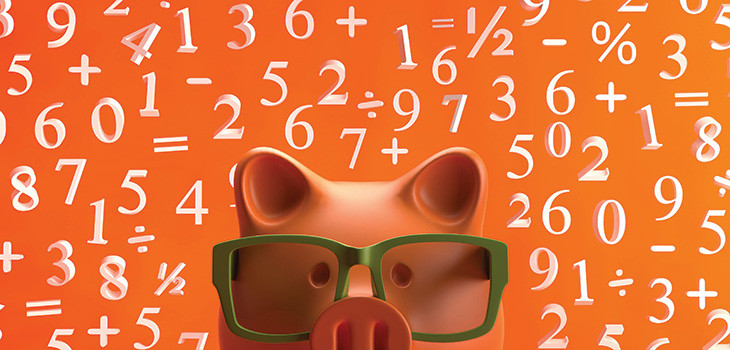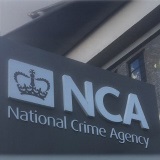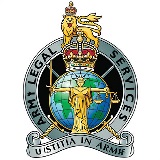*/

Avoid expensive mistakes with Jackie Streat’s smart guide to a self-employed junior barrister’s tax obligations
With energy bills and the cost of living increasing, nobody wants to pay any more tax than necessary. The following pointers will help you manage your filing and tax obligations effectively as well as legally mitigate your tax liabilities.
As you receive fees, put a percentage aside ready to pay your tax. In your first year of trading, we suggest setting aside at least 25% of your fee income (excluding VAT). This includes any second six pupillage award received.
We advise setting up a separate interest-bearing bank account and transferring the monies across on a regular basis. This could be weekly, monthly or upon receiving a payment.
Do your best to ring-fence this money and only access it once you know what your tax bill is going to be.
Keeping and logging your business receipts will ensure that you claim tax relief on all expenses incurred for your barrister trade and hence pay less tax.
Indeed, as a sole trader, you must keep your records for at least 5 years after the 31 January submission deadline of the relevant tax year. This is essential as HMRC may check your records to make sure you are paying the right amount of tax.
You can keep electronic copies of your receipts or hard copies – whichever you prefer.
It is also important that you have a good understanding of which types of expenses are tax deductible and which are not. This will ensure that you do not miss out on claiming tax relief on a valid business expense and hence overpay tax. It will also ensure that you do not mistakenly claim tax relief on an expense which is not tax deductible.
Speak to your accountant if you are uncertain. An accountant who is experienced in dealing with barristers’ tax affairs will be better equipped to advise.
Have a clear understanding of your tax return, VAT filing and payment deadlines to avoid unnecessary penalties, interest or even an HMRC enquiry:
Have your annual accounts prepared as soon as possible after your accounting year end date. This will advise you of your upcoming tax liabilities for a year well in advance, so that you know how much money you should have saved for tax.
This will give you time to plan to make the payment and to increase the percentage of income you set aside for tax if necessary.
It may be helpful to set up a separate bank account for your barrister income and expenses. This will make is easier to keep track of your income/expenses for the preparation of your tax return. It will also ensure that you do not mix personal expenses into your business expenses which could lead to erroneously overclaiming tax relief.
If you are VAT registered, you may wish to use a bank account which is compatible with your VAT submission software. This will allow your business transactions coming through your bank account to automatically feed through into your VAT software and your next VAT return.
You must register for VAT if either your taxable turnover over the last 12 months exceeds £85,000 or your expected taxable turnover in the forthcoming month is likely to exceed £85,000. This is a legal obligation. It is not a choice.
You can, however, voluntarily register for VAT early. Indeed, your chambers may well ask you to register for VAT early, often from your commencement of trade or commencement of tenancy. So what are the advantages of voluntarily registering for VAT early?
You can reclaim the VAT that you pay on your business expenses. If you pay VAT on your chambers rent and expenses, this may be considerable.
Moreover, in your first VAT return, you can go back 4 years pre-registration and reclaim the VAT that you have paid on any capital business items. A capital item is something which lasts longer than a year such as a laptop, home office desk, chair, wig and gown.
In addition, you can go back 6 months pre-registration and reclaim the VAT on any business expense. It does not need to be capital in nature.
If you are not VAT registered, and therefore not charging VAT on your fees, clients may infer that your turnover is below £85,000.
If you are charging VAT on your fees, clients will not know what your level of turnover is and you will look more established.
You will never make the mistake of going over the VAT threshold and forgetting to register for VAT. This can be quite an expensive mistake to make.
If you do discover that you went over the VAT threshold sometime in the past, and forgot to register for VAT, you will still need to register for VAT on the correct date in the past. HMRC will then deem that all invoices raised post the registration date include VAT (even though VAT was not charged) and that VAT will be due to HMRC.
You may be able to recharge this VAT to your clients. However, if your clients are not VAT registered themselves and hence cannot reclaim the VAT themselves, they may be reluctant to pay it.
On the other side of the coin, once you are VAT registered, you will need to prepare and submit VAT returns to HMRC on a quarterly basis. This has an administrative overhead in terms of time and money.
There are fines and penalties if you file your VAT returns late or pay the associated VAT late.
Once you are VAT registered, you will also need to comply with the Making Tax Digital legislation. Maintaining records on digital software such as Xero Cloud Accounting software will ensure compliance. However, this software will have a licence fee.
Working parents of children aged 3 to 4 are currently entitled to 15 hours of free childcare a week. You may be eligible for 30 hours’ free childcare a week if both parents are in work and earn at least the national minimum wage. However, if you or your partner have an expected ‘adjusted net income’ over £100,000 in the current tax year, you will not be eligible for 30 hours’ free childcare.
‘Adjusted net income’ comprises taxable income, which includes your self-employment barrister profits, less tax reliefs that apply, such as gross pension payments made.
Hence, if your self-employment profits exceed £100,000, by making a suitable payment into your pension, you may be able to reduce your adjusted net income to be below £100,000 and thus qualify for 30 hours’ free childcare.
Individuals are entitled to make net pension contributions of £2,880 (£3,600 gross) each tax year, regardless of their income levels. Individuals are entitled to an annual pension allowance of £48,000 net (£60,000 gross) each tax year but are restricted to the level of income in that tax year.
If your income is more than £260,000 then the annual allowance is reduced or tapered. It reduces to a maximum of £8,000 net (£10,000 gross) when your income is £360,000 or more.
The difference between net and gross is that net is the amount you pay, and the extra amount is the government top-up of 20%, which gets added to your pension pot. If you are a basic-rate taxpayer, this is all the tax relief you will receive. However, if you are a higher rate or additional rate taxpayer, you will receive further tax relief via your tax return. The tax relief is received by increasing your basic rate band by the gross pension contribution.
For example, if your total income was £60,000, you would be paying 20% tax up to £50,270 and 40% thereafter. However, if you decided to make a pension contribution to stem the gap between £50,270 and £60,000, which would be £9,730 gross (£7,784 net), this would bring all your income into the basic rate of tax. There is also a further potential to save tax if you are in receipt of child benefit, as moving back into the basic rate tax band would mean that you wouldn’t be required to repay it.
If you have family members who do not already have a pension scheme, you can make a pension contribution for them up to £2,880 net (£3,600 gross) to get them off the mark.
There is also a scenario where you can ‘have your cake and eat it’ – when income is hovering around and above the £100,000 amount.
In addition to increasing the basic rate tax band, pension contributions can also have a positive impact on your personal allowance. Usually, when income goes above £100,000 you start losing your personal allowance. You lose £1 for every £2 you go over, until eventually, you lose it all. Therefore, if your income were to go up to £125,140, you will have lost your personal allowance entirely. However, if you were to make a gross pension contribution of £25,140 (£20,112 net) this also has the effect of decreasing your adjusted net income down to £100,000 and reinstates your personal allowance in full. The marginal rate of tax between £100,000 and £125,140 is 60% and so there is a potential to save a large amount of tax.
Once you have opened a pension scheme, if you don’t use all your annual pension allowance for a given tax year, you are allowed to carry it forward and then use it in a later tax year. You can go back three tax years and use unused pension allowances and therefore can potentially make large contributions at once. However, it is on a sliding scale and so if it is left unused, then you will lose it.
Everyone has an ISA allowance of £20,000 each tax year. The benefit of ISAs is that returns on your investments are not taxable for income tax or capital gains tax. With interest rates increasing, ISAs may be the right way to go for sheltering cash from tax. Alternatively, shares in companies and funds can be purchased via a stocks and shares ISA.
If you have children or grandchildren, you may consider putting money into a Junior ISA for them, as these tend to attract higher interest rates than a normal bank account. This also avoids the trap where if a child earns more than £100 in interest (when a parent has put money into a bank account), the parent is required to declare that interest on their tax return, as if it were theirs. The junior ISA allowance is less than an adult one of £9,000.
Note that unused ISA allowances cannot be carried forward into future years. If you don’t use it, you lose it.
There are certain types of investments that attract tax relief. Investments made into Enterprise Investment Schemes (EIS), Seed Enterprise Investment Schemes (SEIS) and Venture Capital Trusts (VCT) attract 30% for EIS and VCTs and 50% for SEIS. They are risky investments and in turn offer the tax breaks for doing so. These companies are typically start-ups. However, there have been success stories such as Fever-Tree. Please note that you should always be aware of the risks before investing.
People often wonder why we request details of their charitable donations made under gift aid. The simple reason is that if you are a higher or additional rate taxpayer, you will receive additional tax relief via your tax return. Gift aid payments work in a similar way to pension contributions in that they increase your basic rate band and decrease your adjusted net income, if over £100,000. If you don’t already tick the box for gift aid and are a taxpayer, we would advise that you do in future. Not only do you benefit, but the charity benefits, as the amount you donate gets topped up by the government by 25%. For example, if you make an £80 contribution, the charity will receive £100.
Every individual has an annual exemption for capital gains tax of £6,000. Therefore, if you have large investment portfolios or property portfolios, you may want to consider disposing of a proportion of them to make use of your allowance.
If you are married, a transfer of assets to your spouse can be made at no gain/no loss. Therefore, if you have a shareholding that is going to produce a gain of £12,000 – instead of holding all the shares under one person’s name, you could transfer 50% of the shares to your spouse before disposal. This will utilise both your spouse’s annual allowance as well as your own upon disposal of the shares and hence you will pay no capital gains tax at all.
You may be considering purchasing or leasing a new car, which you plan to use for business.
There are both tax incentives to encourage you to purchase low CO2 emission cars and tax disincentives to deter you from purchasing high CO2 emission cars. For example, if you buy a brand-new electric car with zero emissions, the full cost of the car can be offset against your business profits (pro-rated for your business use). The timing of buying this will be related to your accounting year end, which may not the same as the tax year end.
If you lease a car, your full lease payments are usually tax deductible (pro rated for business use). However, if you lease a car with CO2 emissions exceeding 50g/km, you will only receive tax relief on 85% of your lease payments (pro rated for business use). This is a deliberate tax policy to deter businesses from using high CO2 emission cars.
In your first year of self-employment, provided your turnover falls below £150K, your profits will be accounted for on the ‘cash’ basis. This means that you will be taxed on fees actually received, as opposed to the value of work carried out.
If, however, your turnover in your first year exceeds £150K, your profits will be taxed on the earnings basis. This means you will be taxed not only on fees you have received, but also on the value of invoices you have raised for which you have yet to be paid, and indeed the value of work carried out, for which you have yet to invoice.
This is highly likely to significantly increase your tax liability in your first year of trading.
In subsequent years, provided your first year was accounted for on the ‘cash basis’, your turnover will need to exceed £300K before you move across to the ‘earnings basis’. Exceeding the £300K threshold acts as a trigger and you will move across to the earnings basis in the following year as long as in, this year, your turnover does not fall below £150K.

With energy bills and the cost of living increasing, nobody wants to pay any more tax than necessary. The following pointers will help you manage your filing and tax obligations effectively as well as legally mitigate your tax liabilities.
As you receive fees, put a percentage aside ready to pay your tax. In your first year of trading, we suggest setting aside at least 25% of your fee income (excluding VAT). This includes any second six pupillage award received.
We advise setting up a separate interest-bearing bank account and transferring the monies across on a regular basis. This could be weekly, monthly or upon receiving a payment.
Do your best to ring-fence this money and only access it once you know what your tax bill is going to be.
Keeping and logging your business receipts will ensure that you claim tax relief on all expenses incurred for your barrister trade and hence pay less tax.
Indeed, as a sole trader, you must keep your records for at least 5 years after the 31 January submission deadline of the relevant tax year. This is essential as HMRC may check your records to make sure you are paying the right amount of tax.
You can keep electronic copies of your receipts or hard copies – whichever you prefer.
It is also important that you have a good understanding of which types of expenses are tax deductible and which are not. This will ensure that you do not miss out on claiming tax relief on a valid business expense and hence overpay tax. It will also ensure that you do not mistakenly claim tax relief on an expense which is not tax deductible.
Speak to your accountant if you are uncertain. An accountant who is experienced in dealing with barristers’ tax affairs will be better equipped to advise.
Have a clear understanding of your tax return, VAT filing and payment deadlines to avoid unnecessary penalties, interest or even an HMRC enquiry:
Have your annual accounts prepared as soon as possible after your accounting year end date. This will advise you of your upcoming tax liabilities for a year well in advance, so that you know how much money you should have saved for tax.
This will give you time to plan to make the payment and to increase the percentage of income you set aside for tax if necessary.
It may be helpful to set up a separate bank account for your barrister income and expenses. This will make is easier to keep track of your income/expenses for the preparation of your tax return. It will also ensure that you do not mix personal expenses into your business expenses which could lead to erroneously overclaiming tax relief.
If you are VAT registered, you may wish to use a bank account which is compatible with your VAT submission software. This will allow your business transactions coming through your bank account to automatically feed through into your VAT software and your next VAT return.
You must register for VAT if either your taxable turnover over the last 12 months exceeds £85,000 or your expected taxable turnover in the forthcoming month is likely to exceed £85,000. This is a legal obligation. It is not a choice.
You can, however, voluntarily register for VAT early. Indeed, your chambers may well ask you to register for VAT early, often from your commencement of trade or commencement of tenancy. So what are the advantages of voluntarily registering for VAT early?
You can reclaim the VAT that you pay on your business expenses. If you pay VAT on your chambers rent and expenses, this may be considerable.
Moreover, in your first VAT return, you can go back 4 years pre-registration and reclaim the VAT that you have paid on any capital business items. A capital item is something which lasts longer than a year such as a laptop, home office desk, chair, wig and gown.
In addition, you can go back 6 months pre-registration and reclaim the VAT on any business expense. It does not need to be capital in nature.
If you are not VAT registered, and therefore not charging VAT on your fees, clients may infer that your turnover is below £85,000.
If you are charging VAT on your fees, clients will not know what your level of turnover is and you will look more established.
You will never make the mistake of going over the VAT threshold and forgetting to register for VAT. This can be quite an expensive mistake to make.
If you do discover that you went over the VAT threshold sometime in the past, and forgot to register for VAT, you will still need to register for VAT on the correct date in the past. HMRC will then deem that all invoices raised post the registration date include VAT (even though VAT was not charged) and that VAT will be due to HMRC.
You may be able to recharge this VAT to your clients. However, if your clients are not VAT registered themselves and hence cannot reclaim the VAT themselves, they may be reluctant to pay it.
On the other side of the coin, once you are VAT registered, you will need to prepare and submit VAT returns to HMRC on a quarterly basis. This has an administrative overhead in terms of time and money.
There are fines and penalties if you file your VAT returns late or pay the associated VAT late.
Once you are VAT registered, you will also need to comply with the Making Tax Digital legislation. Maintaining records on digital software such as Xero Cloud Accounting software will ensure compliance. However, this software will have a licence fee.
Working parents of children aged 3 to 4 are currently entitled to 15 hours of free childcare a week. You may be eligible for 30 hours’ free childcare a week if both parents are in work and earn at least the national minimum wage. However, if you or your partner have an expected ‘adjusted net income’ over £100,000 in the current tax year, you will not be eligible for 30 hours’ free childcare.
‘Adjusted net income’ comprises taxable income, which includes your self-employment barrister profits, less tax reliefs that apply, such as gross pension payments made.
Hence, if your self-employment profits exceed £100,000, by making a suitable payment into your pension, you may be able to reduce your adjusted net income to be below £100,000 and thus qualify for 30 hours’ free childcare.
Individuals are entitled to make net pension contributions of £2,880 (£3,600 gross) each tax year, regardless of their income levels. Individuals are entitled to an annual pension allowance of £48,000 net (£60,000 gross) each tax year but are restricted to the level of income in that tax year.
If your income is more than £260,000 then the annual allowance is reduced or tapered. It reduces to a maximum of £8,000 net (£10,000 gross) when your income is £360,000 or more.
The difference between net and gross is that net is the amount you pay, and the extra amount is the government top-up of 20%, which gets added to your pension pot. If you are a basic-rate taxpayer, this is all the tax relief you will receive. However, if you are a higher rate or additional rate taxpayer, you will receive further tax relief via your tax return. The tax relief is received by increasing your basic rate band by the gross pension contribution.
For example, if your total income was £60,000, you would be paying 20% tax up to £50,270 and 40% thereafter. However, if you decided to make a pension contribution to stem the gap between £50,270 and £60,000, which would be £9,730 gross (£7,784 net), this would bring all your income into the basic rate of tax. There is also a further potential to save tax if you are in receipt of child benefit, as moving back into the basic rate tax band would mean that you wouldn’t be required to repay it.
If you have family members who do not already have a pension scheme, you can make a pension contribution for them up to £2,880 net (£3,600 gross) to get them off the mark.
There is also a scenario where you can ‘have your cake and eat it’ – when income is hovering around and above the £100,000 amount.
In addition to increasing the basic rate tax band, pension contributions can also have a positive impact on your personal allowance. Usually, when income goes above £100,000 you start losing your personal allowance. You lose £1 for every £2 you go over, until eventually, you lose it all. Therefore, if your income were to go up to £125,140, you will have lost your personal allowance entirely. However, if you were to make a gross pension contribution of £25,140 (£20,112 net) this also has the effect of decreasing your adjusted net income down to £100,000 and reinstates your personal allowance in full. The marginal rate of tax between £100,000 and £125,140 is 60% and so there is a potential to save a large amount of tax.
Once you have opened a pension scheme, if you don’t use all your annual pension allowance for a given tax year, you are allowed to carry it forward and then use it in a later tax year. You can go back three tax years and use unused pension allowances and therefore can potentially make large contributions at once. However, it is on a sliding scale and so if it is left unused, then you will lose it.
Everyone has an ISA allowance of £20,000 each tax year. The benefit of ISAs is that returns on your investments are not taxable for income tax or capital gains tax. With interest rates increasing, ISAs may be the right way to go for sheltering cash from tax. Alternatively, shares in companies and funds can be purchased via a stocks and shares ISA.
If you have children or grandchildren, you may consider putting money into a Junior ISA for them, as these tend to attract higher interest rates than a normal bank account. This also avoids the trap where if a child earns more than £100 in interest (when a parent has put money into a bank account), the parent is required to declare that interest on their tax return, as if it were theirs. The junior ISA allowance is less than an adult one of £9,000.
Note that unused ISA allowances cannot be carried forward into future years. If you don’t use it, you lose it.
There are certain types of investments that attract tax relief. Investments made into Enterprise Investment Schemes (EIS), Seed Enterprise Investment Schemes (SEIS) and Venture Capital Trusts (VCT) attract 30% for EIS and VCTs and 50% for SEIS. They are risky investments and in turn offer the tax breaks for doing so. These companies are typically start-ups. However, there have been success stories such as Fever-Tree. Please note that you should always be aware of the risks before investing.
People often wonder why we request details of their charitable donations made under gift aid. The simple reason is that if you are a higher or additional rate taxpayer, you will receive additional tax relief via your tax return. Gift aid payments work in a similar way to pension contributions in that they increase your basic rate band and decrease your adjusted net income, if over £100,000. If you don’t already tick the box for gift aid and are a taxpayer, we would advise that you do in future. Not only do you benefit, but the charity benefits, as the amount you donate gets topped up by the government by 25%. For example, if you make an £80 contribution, the charity will receive £100.
Every individual has an annual exemption for capital gains tax of £6,000. Therefore, if you have large investment portfolios or property portfolios, you may want to consider disposing of a proportion of them to make use of your allowance.
If you are married, a transfer of assets to your spouse can be made at no gain/no loss. Therefore, if you have a shareholding that is going to produce a gain of £12,000 – instead of holding all the shares under one person’s name, you could transfer 50% of the shares to your spouse before disposal. This will utilise both your spouse’s annual allowance as well as your own upon disposal of the shares and hence you will pay no capital gains tax at all.
You may be considering purchasing or leasing a new car, which you plan to use for business.
There are both tax incentives to encourage you to purchase low CO2 emission cars and tax disincentives to deter you from purchasing high CO2 emission cars. For example, if you buy a brand-new electric car with zero emissions, the full cost of the car can be offset against your business profits (pro-rated for your business use). The timing of buying this will be related to your accounting year end, which may not the same as the tax year end.
If you lease a car, your full lease payments are usually tax deductible (pro rated for business use). However, if you lease a car with CO2 emissions exceeding 50g/km, you will only receive tax relief on 85% of your lease payments (pro rated for business use). This is a deliberate tax policy to deter businesses from using high CO2 emission cars.
In your first year of self-employment, provided your turnover falls below £150K, your profits will be accounted for on the ‘cash’ basis. This means that you will be taxed on fees actually received, as opposed to the value of work carried out.
If, however, your turnover in your first year exceeds £150K, your profits will be taxed on the earnings basis. This means you will be taxed not only on fees you have received, but also on the value of invoices you have raised for which you have yet to be paid, and indeed the value of work carried out, for which you have yet to invoice.
This is highly likely to significantly increase your tax liability in your first year of trading.
In subsequent years, provided your first year was accounted for on the ‘cash basis’, your turnover will need to exceed £300K before you move across to the ‘earnings basis’. Exceeding the £300K threshold acts as a trigger and you will move across to the earnings basis in the following year as long as in, this year, your turnover does not fall below £150K.
Avoid expensive mistakes with Jackie Streat’s smart guide to a self-employed junior barrister’s tax obligations

What’s it really like to work in the National Crime Agency’s in-house legal team? TM, a lawyer in the NCA’s Financial Disruptions Litigation team, shares a day in her life

By the Chartered Governance Institute UK Ireland

Q and A with Major Susie Brooke, Legal Officer in Army Legal Services

Have you considered being a barrister in the British Army? Here’s an insight into a career in Army Legal Services

Clare describes her journey from Crown Prosecution Service legal trainee to Senior Crown Prosecutor, a typical ‘day in the life’ and the inspiration she draws from her career

What's it like being a legal trainee at the Crown Prosecution Service? Amy describes what drew her to the role, the skills required and a typical day in the life